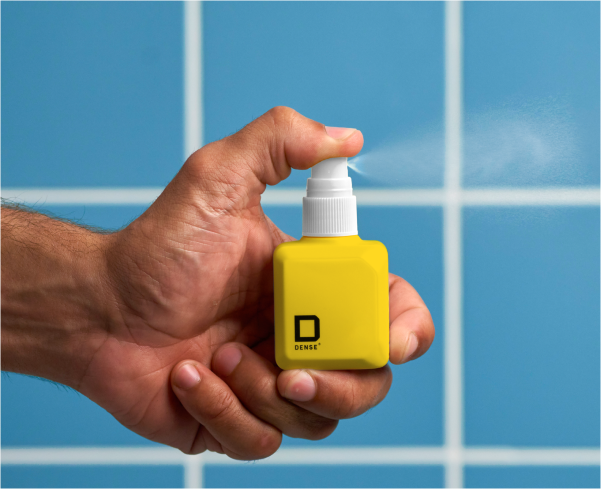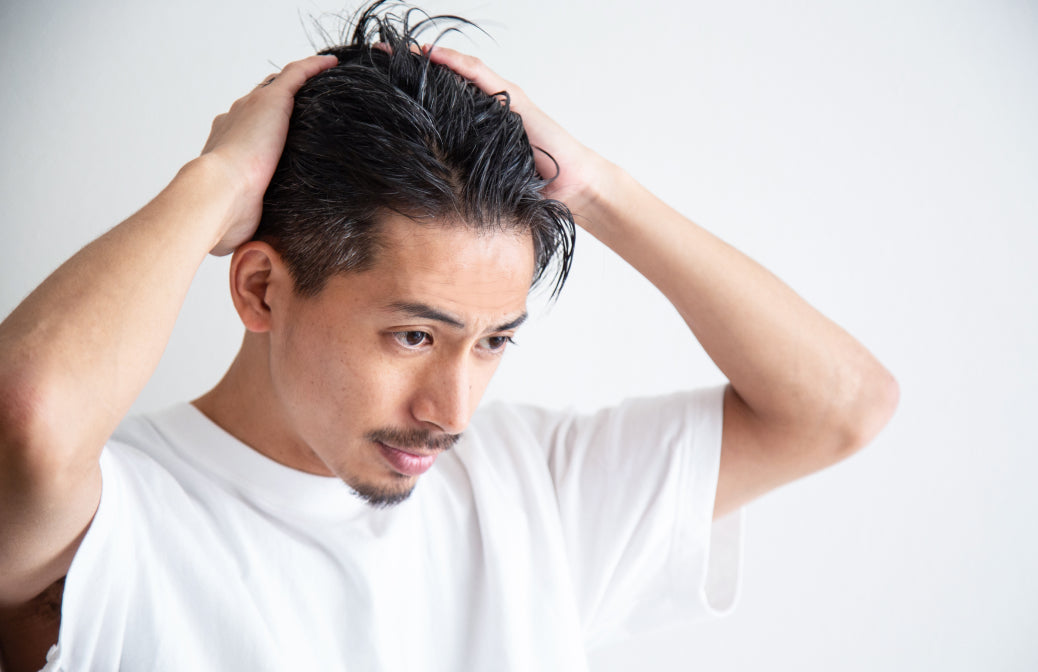How does hair grow?
Our hair doesn't just appear overnight. It undergoes a complex hair growth cycle which involves various stages, each crucial in understanding how our hair flourishes.
The process starts deep within the hair follicle. When conditions are right, a new hair starts growing from this follicle, pushing the old one out.
The 3 phases of the hair growth cycle
Every strand of our hair goes through three main phases: the anagen, catagen, and telogen phases.
Each phase has its characteristics determining how our hair grows, rests, and eventually sheds.
How does the hair growth cycle work?
The hair growth cycle is an orchestrated sequence where hair follicles switch between growth and rest. This cycle ensures that while some hairs are growing, others are resting, and some are shedding, thus preventing bald spots.
The hair growth cycle is an intricate process that ensures we don't end up shedding all our hair at once. It's fascinating to note that at any given time, each hair follicle on our scalp is in a distinct phase of this cycle. To grasp the nuances of how hair grows and sheds, one needs to delve into the stages of the growth cycle.
Initially, the anagen phase or the growing phase, dominates. This is when the hair actively sprouts from the hair follicle, getting nourished by a robust blood supply at its base. The duration of this phase can be several years, determining the maximum hair length for many.
Post the bustling activity of the anagen stage, the hair enters the transitional or catagen phase. Here, the hair follicle shrinks and the hair bulb detaches from the blood supply, marking the onset of the next, more restful phase.
The telogen phase, often referred to as the resting or shedding phase, sees the hair taking a breather. As the old hair rests, new hair growth is initiated beneath the surface.
After a few months, the resting old hair falls out, naturally making way for the new hair pushing its way to the surface.
The cycle doesn't halt here. With the shedding of the old hair, the hair follicle is rejuvenated, and the entire process begins anew. This cyclical nature ensures a balanced hair density on our scalp, with only about 50-100 hairs shedding daily amidst the tens of thousands present.
In essence, the hair growth cycle is nature's way of ensuring we maintain a head full of hair while continually rejuvenating and refreshing our locks.
Immediate Anagen release
The anagen phase, often referred to as the growth phase, is when your hair actively grows. Most of our hair is in this phase, which can last several years.
Catogen – transitional phase
Following the anagen phase, hair enters the catagen phase. This short transitional phase lasts only a few weeks. Here, the hair follicle shrinks, and the hair's growth slows.
Delayed anagen release
Sometimes, due to various factors like stress or hair health, there can be a delay before the hair re-enters the anagen phase.
Ensuring healthy hair growth through proper care and nutrition can mitigate such delays.
Understanding the hair growth cycle
Understanding the hair growth cycle is crucial, especially when addressing hair loss concerns. Recognizing the signs of abnormal hair shedding or hair thinning helps in early intervention.
To truly appreciate the intricacies of how our hair grows, it's essential to delve into the hair growth cycle. This cycle isn't merely about growth and shedding. Instead, it’s a finely-tuned process ensuring continuous hair replacement while maintaining a full head of hair.
Understanding the hair growth cycle offers insights into various concerns like hair thinning, balding, or even excessive hair growth in unwanted areas. It can explain why certain treatments work and why others might fail. For instance, understanding that the anagen phase is the only time hair is actively growing can guide treatments targeting hair loss.
Each phase— anagen (growth), catagen (transition), and telogen (resting)—has distinct characteristics and durations. While the anagen phase might last years, the catagen phase is relatively brief, lasting just a few weeks.
The telogen phase sees the hair resting, and eventually, old hairs fall out, making way for new growth.
What Can You Do to Try and Maintain Hair Health During These 4 Stages?

Promoting healthy hair growth involves proper nutrition, including nutritional supplements, and care. Ensuring a good protein intake and blood supply to the hair follicles can boost the growth cycle.
Anagen – growing phase
During the anagen phase, your hair grows rapidly, about 1 cm every 28 days. This phase can last 2-7 years, depending on genetics and hair health.
Hair Follicle
The hair follicle is where it all begins. It’s the tiny structure in the dermal layer of our skin where the hair growth cycle initiates.
The Catagen phase
The catagen phase is short-lived, lasting only a couple of weeks. It acts as a bridge between the growth and shedding phases.
Short anagen phase
In some people, the anagen phase is unusually short, leading to limited hair growth before shedding occurs.
What are the stages of the hair growth cycle?
The hair growth cycle comprises mainly three phases with a speculated fourth, the exogen phase, focusing on hair shedding.
Telogen – falling out (shedding) phase
The telogen phase, or shedding phase, is when old hairs fall out to make room for new ones. It's natural to lose 50-100 hairs daily during this phase.
Using Dense Products

There are products like the ones we created at Dense Hair Experts designed to support and enhance the hair growth cycle.
Such products ensure our hair gets all the nutrients it needs.
Navigating the world of hair care can sometimes feel overwhelming, given the multitude of options available. That's where specialized products, like the ones curated by Dense Hair Experts, come into play. These aren't your run-of-the-mill hair products; they're scientifically formulated to align with and bolster the hair growth cycle.
At the core of the Dense product line is the understanding that hair isn't just about aesthetics. It's about health, vitality, and the intricate balance of the hair growth cycle. Each hair follicle requires specific nutrients to thrive, and deficiencies can lead to problems like hair thinning or even more drastic hair loss.
Dense products serve as a lifeline for such issues. Packed with essential nutrients and active ingredients, they aim to ensure that every hair follicle is well-fed and primed for optimal hair growth. Whether it's the DENSE® Shampoo, conditioner, or the Scalp Stimulating Brush, each product is crafted with the intent of nurturing your hair from root to tip.
Moreover, using these products goes beyond mere application. It's an experience. For instance, the sensation of the Scalp Stimulating Brush not only invigorates your scalp but ensures the active ingredients penetrate deep, right where they're needed most. Such holistic care ensures that over time, your hair isn’t just growing, but flourishing with vigor and vitality.
In essence, by integrating Dense products into your daily regimen, you're not just caring for your hair. You're actively engaging with and enhancing its natural growth cycle, ensuring your locks are always at their healthiest and most radiant.
Nutritional Supplements for Healthy Hair Growth
Healthy hair growth can be boosted by nutritional supplements. These supplements ensure your hair gets essential vitamins and minerals.
While external hair care practices are essential, what we put inside our bodies plays an even more significant role in ensuring healthy hair growth. Given the rapid division and growth of hair follicles during the anagen phase, they require a consistent supply of essential nutrients.
Hair benefits immensely from a balanced diet. However, due to various reasons, including dietary restrictions, health conditions, or modern-day diets, one might not always get all the required nutrients. This is where nutritional supplements can be beneficial.
Ingredients like biotin, folic acid, iron, zinc, and vitamins A, C, D, and E have been linked to promoting a healthier hair growth cycle. These supplements can boost hair health, making strands stronger, shinier, and more resilient against external damages.
Before incorporating any nutritional supplements, it's wise to consult with a nutritionist or a doctor to ensure they don't interfere with any medications or existing health conditions.
Phases of anagen stage
While the anagen stage is termed as one phase, it has various substages, each crucial to how our hair grows.
Chronic Telogen Effluvium
Telogen effluvium is a condition where more hairs than usual prepare to fall out. Chronic telogen effluvium lasts longer than the typical few months.
Chemotherapy drugs that cause hair loss
Certain chemotherapy drugs can disrupt the hair growth cycle, leading to hair loss. However, post-treatment, most people experience new hair growth.
Chemotherapy is a potent treatment used primarily to tackle cancerous cells. However, while these drugs target rapidly dividing cells (like cancer), they inadvertently affect other rapidly dividing cells too, including those in our hair follicles. This disruption to the hair growth cycle often results in hair loss, making it one of the most recognized side effects of chemotherapy.
Not all chemotherapy drugs cause hair loss, and the severity can range from mild thinning to complete baldness. Some commonly used chemotherapy drugs associated with hair loss include doxorubicin, cyclophosphamide, and taxanes. It's crucial for patients to discuss potential side effects, including disruptions to the hair growth cycle, with their healthcare provider to mentally and physically prepare for the changes.










